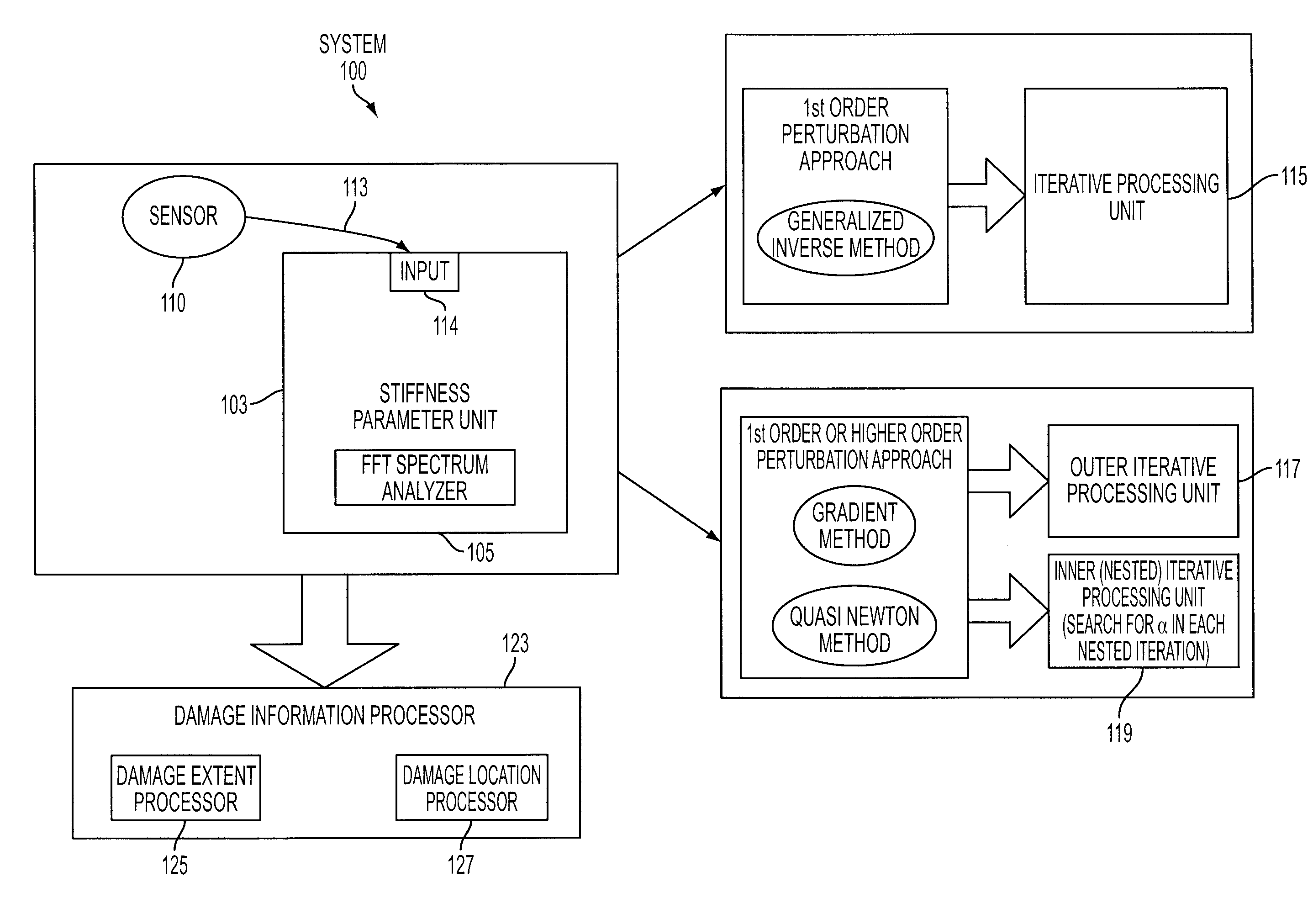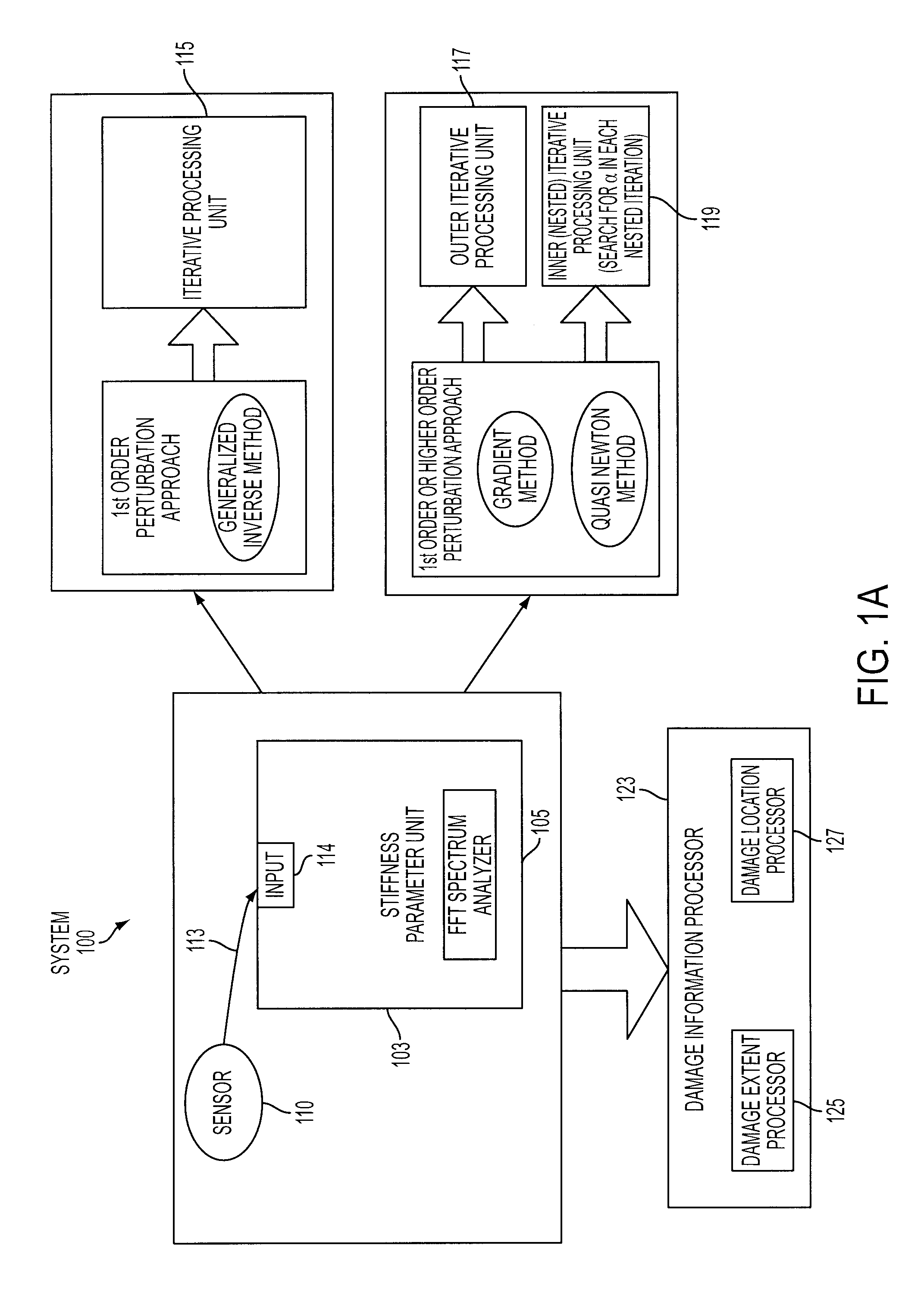System and method for detecting structural damage
a structural damage and detection method technology, applied in the direction of mechanical roughness/irregularity measurement, anti-theft device, instruments, etc., can solve the problems of unquantifiable and unreliable visual inspection of structural members, large amount of potentially hazardous dye to be applied and disposed, and inability to apply mt to large structures
- Summary
- Abstract
- Description
- Claims
- Application Information
AI Technical Summary
Benefits of technology
Problems solved by technology
Method used
Image
Examples
experimental verification
Numerical and Experimental Verification
[0102]Cantilever Aluminum Beams
[0103]Experimental damage detection results for four different scenarios are shown first, followed by various simulation results.[0104]Scenario 1: Evenly-distributed damage machined from the top and the bottom surfaces of the beam test specimen.
[0105]The aluminum beam test specimen shown in FIG. 12 is 45 cm long by 2.54 cm wide by 0.635 cm thick. It is divided into 40 elements (each element has a length of 1.125 cm). The beam has a section (from approximately 10 cm to 15 cm from the cantilevered end) of 5 cm long and 7.62E-4 m thick machined both from the top and the bottom surfaces of the beam. This corresponds to 56% of damage (or reduction of bending stiffness EI) along the length of five elements (from the 9th to the 13rd element). Using the changes of the first 2 to 5 measured natural frequencies, damage is detected within 7 elements using 2 or 5 measured frequencies (from the 7th to the 13rd element with 5 m...
examples and
Numerical Simulation
[0160]When the shape function of the pulses is represented by a half sine wave, i.e.,
y(t)=sin(πtΔτ)[H(t)-H(t-Δτ)](112)
where is the Heaviside function, we obtain by using (60), (64), and (103)
E[X(jω)]=-E(ψ1)λπΔτ(1+-jωΔτ)(-jωT-1)jω(π2-ω2Δτ2)(113)E[S1(ω)]=2π2Δτ2[1+cos(ωΔτ)](ω2Δτ2-π2)2(T+Δτ)[λTE(ψ12)-2λ2E2(ψ1)(cosωT-1)ω2](114)E[S2(ω)]=λE(ψ12)Δτ2{[-2Tπ4-2Tcos(ωΔτ)π4+(4cos(ωΔτ)π4+π4)Δτ](ω2Δτ2-π2)3(T-Δτ)+[+(8sin(ωΔτ)ωπ2+2Tcos(ωΔτ)ω2π2+2Tπ2ω2)Δτ2](ω2Δτ2-π2)3(T-Δτ)+[(ω4Δτ5-4cos(ωΔτ)ω2π2-2ω2π2)Δτ3](ω2Δτ2-π2)3(T-Δτ)}+8λE2(ψ1)Δτ2(1-cosω(T-Δτ))π2ω2(T-Δτ)(115)
Consider next the normalized shape function y(t) shown in FIG. 35 with unit maximum amplitude. It is obtained by averaging a series of normalized force pulses from impact tests on the four-bay space frame as shown in FIG. 10. There are 21 sample points in the shape function, which are connected, as shown in FIG. 34. Other parameters used are T=8 s, Δτ=20×T / 1024=0.15625 s where h=T / 1024=0.0078125 / s is the sampling interva...
PUM
| Property | Measurement | Unit |
|---|---|---|
| stiffness | aaaaa | aaaaa |
| dimension | aaaaa | aaaaa |
| force | aaaaa | aaaaa |
Abstract
Description
Claims
Application Information
 Login to View More
Login to View More - R&D
- Intellectual Property
- Life Sciences
- Materials
- Tech Scout
- Unparalleled Data Quality
- Higher Quality Content
- 60% Fewer Hallucinations
Browse by: Latest US Patents, China's latest patents, Technical Efficacy Thesaurus, Application Domain, Technology Topic, Popular Technical Reports.
© 2025 PatSnap. All rights reserved.Legal|Privacy policy|Modern Slavery Act Transparency Statement|Sitemap|About US| Contact US: help@patsnap.com



